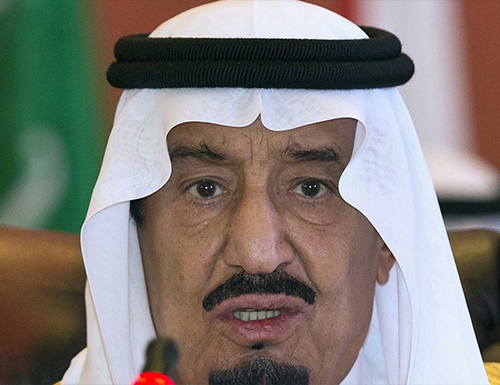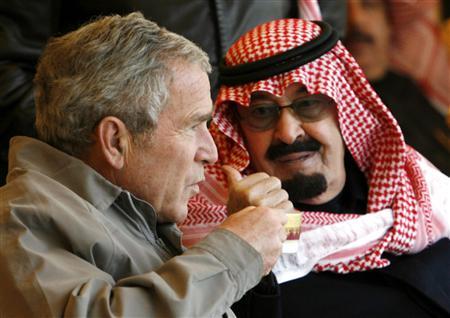By James M. Dorsey,
Introduction
Continued doubts about the longevity of the Saudi ruling family are fuelled by its Faustian bargain with Wahhabism – a conser vative, intolerant, discriminatory and anti-pluralistic interpretation of Islam.[i]
It is a bargain that has produced one of the largest dedicated public diplomacy campaigns in history. Estimates of Saudi Arabia’s spending on support of ultra-conservative strands of Islam, including Wahhabism, Salafism and Deobandism, across the globe range from $70 to $100 billion. Saudi largesse funded fund mosques, Islamic schools and cultural institutions, and social services as well as the forging of close ties to non-Wahhabi Muslim leaders and intelligence agencies in various Muslim nations. In doing so, Saudi Arabia succeeded in turning s largely local Wahhabi and like-minded ultra-conservative Muslim worldviews into an influential force in Muslim nations and communities across the globe.[ii]
The campaign is not simply a product of the marriage between the Al Sauds and the Wahhabis. It is central to Saudi Arabia’s soft power policy and the Al Sauds’ survival strategy. One reason, albeit not the only one, that the longevity of the Al Sauds is a matter of debate, is the fact that the propagation of Wahhabism is having a backlash in countries across the globe, as well as on Saudi Arabia itself. More than ever before, Wahhabism, and its theological parent, Salafism, are being put under the spotlight due to their theological or ideological similarities with jihadism in general, and the ideology of the Islamic State (IS) group in particular.

Speaking at a conference in Singapore, sociologist Farid Alatas noted that madrassas – often funded by Saudi Arabia or other Salafi and Wahhabi groups – fails to produce graduates trained to think critically. “They have not been exposed to [Muslim] intellectuals like Ibn Khaldoun,” Alatas said “That is the opportunity for Salafis and Wahhabis” in the absence of Muslim scholars who would be capable of debunking their myths he added. Alatas was referring to Abd al-Raḥman ibn Muḥammad ibn Muḥammad ibn Abi Bakr Muḥammad ibn al-Ḥasan Ibn Khaldun, the 14th century historian, who is widely seen as one of the fathers of modern sociology, historiography, demography and economics.
Taking Wahhabism’s influence in Malaysia as an example, Alatas pointed to the uncontested distribution of a sermon by the religious department of the Malaysian state of Selangor, that asserted that women who fail to wear a hijab invite rape and resemble a fish that attracts flies.[iii]
Such attitudes fostered by Saudi funding, as well as Saudi Arabia’s willingness to look the other way when its youth leave the kingdom to join militant groups, undermine Saudi Arabia’s international image and its efforts to create soft power. “It is often alleged that the Saudis export terrorism. They don’t, but what they have done is encourage their own radicals –a natural by-product of Wahhabism, Saudi Arabia’s conservative brand of Islam – to commit their terrorist acts elsewhere. As the radicals leave, so does Saudi money, which funds their violent activities,” said former U.S. Assistant Secretary of State for East Asia, Christopher R. Hill.[iv] The estimated 2,500 Saudis who have joined IS constitute the group’s second largest national contingent.[v]
The problem for the Al Sauds is not just that their image is under attack and that their legitimacy is wholly dependent on their identification with Wahhabism; it is also that the Al Sauds since the launch of their Islamist campaign, have often been only nominally in control of it. As a result, the Al Sauds have let a genie out of the bottle that now leads an independent life and cannot be put back into the bottle. Wahhabi and Salafi-influenced education systems played into the hands of Arab autocrats, who for decades dreaded an education system that would teach critical thinking and the asking of difficult questions.
Saudi funding of conservative Islamic learning neatly aligned itself in Pakistan, which has an education system shaped by the partition of British India into predominantly Hindu India and Muslim Pakistan. This emphasis on religious nationalism, where minorities are perceived as being inferior, involved a parochial definition of what it meant to be Muslim in Pakistan.[vi] The U.S. Commission on International Religious Freedom (USCIRF) reported that Pakistani public school textbooks – circulated to at least 41 million children -contained derogatory references to religious minorities. The perception of minorities as threats was reinforced with the enhanced Islamisation of textbooks in the decade from 1978 to 1988, in which General Zia ul Haq-ruled Pakistan.[vii]
“In public school classrooms, Hindu children are forced to read lessons about ‘Hindus’ conspiracies toward Muslims’, and Christian children are taught that ‘Christians learned tolerance and kind-heartedness from Muslims.’ This represents a public shaming of religious minority children that begins at a very young age, focusing on their religious and cultural identity and their communities’ past history. A review of the curriculum demonstrates that public school students are being taught that religious minorities, especially Christians and Hindus, are nefarious, violent, and tyrannical by nature. There is a tragic irony in these accusations, because Christians and Hindus in Pakistan face daily persecution, are common victims of crime, and are frequent targets of deadly communal violence, vigilantism, and collective punishment,” USCIRF report concluded.[viii]
“By imposing the harsh, literal interpretation of religion exported and promoted by Saudi Arabia, we have turned Pakistan into a drab, monochromatic landscape where colour, laughter, dancing and music are frowned upon, if not entirely banned. And yet Islam in South Asia was once characterised by a life-enhancing Sufi tradition that is now under threat. More and more, we are following the example set by the Taliban,” added Pakistani writer Irfan Husain.[ix] A Pew Research survey moreover concluded in late 2015 that 78 percent of Pakistanis favoured strict implementation if Islamic law.[x]
Syed Imran Ali Shah whose father was murdered when he was a child, was 16 when in 1999 he was admitted to Mercy Pak School in Peshawar, an educational institution funded by Saudi-backed Mercy International Pakistan. Zahid al-Sheikh, the brother of 9/11 mastermind Khalid al-Sheikh, was one of the charity’s executives in the second half of the 1980s and the 1990s, a time when Saudi Arabia joined the United States in financing the Pakistan-based resistance against the Soviets in Afghanistan.[xi] Syed Imran says his radicalization was spurred by one of his teachers all of whom were in his words Wahhabis. The teacher argued the importance of jihad in his sermons.[xii] Jihad never figured in the school’s curriculum but students learned to believe that the beliefs and practices of other sects were heresy. ”We teach students the aqeedah (creed) of every sect and tell them as to how and where that aqeedah is wrong so that we can guide them to the right aqeedah,” said Umer bin Abdul Aziz of the Jaimatul Asar madrassa in Peshawar.[xiii] Based on textual analysis of madrassa texts, scholar Niaz Muhammad warned that “no one should claim that their statements about the madrassa curriculum have nothing to do with sectarianism or other forms of religious militancy.”[xiv]
In a seminar moderated by Jordanian scholar Nadia Oweidat at the New America Foundation in Washington, D.C., on 3 May 2016, Ahmed Abdellahy, a reformed, former Egyptian jihadist, described being educated in a school system that divided the world into ‘us and them’. ‘Us’ were the Muslims who had been victimised by ‘them’. Abdellahy said he was taught that: ‘they’, the Christians, Westerners and “all the world is against us [Muslims] because we are better than them.” Abdellahy said. He said this was an attitude engraved in generations of children who were expected to accept it at face value. “When I was going to school, the role of the school was to stop you from questioning,” Oweidat added.[xv] The inability of Abdellahy’s school teachers to answer students’ probing questions and a lack of available literature drove him to the Internet, where militant Islamists provided answers.[xvi]
The current backlash of Saudi support for autocracy and funding of the export of Wahhabism and Salafism, coupled with the need to radically reform the kingdom’s economy, means that the Al Sauds and the Wahhabis are nearing a crunch point, one that will not necessarily offer solutions, but in fact could make things worse. It risks sparking ever more militant splits, that will make themselves felt across the Muslim world and in minority Muslim communities elsewhere, in multiple ways.
One already visible fallout of the Saudi campaign is greater intolerance towards minorities and increased sectarianism in countries like Pakistan, Bangladesh, Indonesia and Malaysia. In Pakistan, for example, a U.S. Foreign Service officer, noted that in Saudi-funded “madrassas, children are denied contact with the outside world and taught sectarian extremism, hatred for non-Muslims, and anti-Western/anti-Pakistan government philosophy.”[xvii]
The recent shooting in the southern Philippines of Sheikh Aaidh al-Qarni, a prominent Saudi Wahhabi cleric whose popularity is evident in his following of 12 million on Twitter, further suggests that the backlash for the kingdom is not just the Saudi government emerging as a target but also the ulema[xviii] – including ulema who are not totally subservient to the Saudi government. Sheikh Aaidh al-Qarni is a product of the fusion between Wahhabism and the Muslim Brotherhood that produced the Sahwa, a Saudi Salafist political reform movement. While Philippine investigators are operating on the assumption that the Islamic State (IS) group was responsible for the shooting, Saudi media were quick to report that Saudi authorities had warned the Philippines days earlier that Iran’s Revolutionary Guards were planning an attack.[xix]
A key to understanding the Saudi funding campaign is the fact that while it all may be financed out of one pot of money, it serves different purposes for different parties. For the Wahhabi ulema, it is about proselytization, about the spreading of Islam; for the Saudi government, it is about gaining soft power. At times the interests of the government and the ulema coincide, and at times they diverge. By the same token, the Saudi campaign on some levels has been an unparalleled success, on others, success is questionable and one could argue that it risks becoming a liability for the government.
Read further in attachment…
[i] David Commins, The Wahhabi Mission and Saudi Arabia, London: I. B. Tauris, 2009.
[ii]Sohail Nakhoda, Keynote: Workshop on Islamic Developments in Southeast Asia, Institute of Southeast Asian Studies, 15 November 2015; Prince Ghazi Bin Muhammad Bin Talal, “What Has Broken? Political, Sociological, Cultural and Religious Changes in the Middle East over the Last 25 Years”, S R Nathan Distinguished Lecture, Middle East Institute, 17 November 2015, https://mei.nus.edu.sg/themes/site_themes/agile_records/images/uploads/What_has_broken_v.8,_As_Given,_14.11.15.pdf.
[iii]Farid Alatas, Reviving Islamic Intellectualism, Presentation at RSIS Conference on Islam in the Contemporary World, 28 April 2016, https://www.rsis.edu.sg/event/conference-on-islam-in-the-contemporary-world/.
[iv]Christopher R. Hill, The Kingdom and the Power, Project Syndicate, 27 April 2016, https://www.project-syndicate.org/commentary/us-saudi-arabia-strained-relationship-by-christopher-r-hill-2016-04.
[v]Ashley Kirk, Iraq and Syria: How many foreign fighters are fighting for Isil? The Telegraph, 24 March 2016, http://www.telegraph.co.uk/news/2016/03/29/iraq-and-syria-how-many-foreign-fighters-are-fighting-for-isil/.
[vi]Sara Mahmood, Pakistan’s Public Education System: Narratives of Intolerance, The Diplomat, 13 May 2016, http://thediplomat.com/2016/05/pakistans-public-education-system-narratives-of-intolerance/.
[vii]U.S. Commission on International Religious Freedom, Teaching Intolerance in Pakistan, 2016,http://www.uscirf.gov/sites/default/files/USCIRF_Pakistan_FINALonline.pdf
[viii] Ibid. U.S. Commission
[ix] Irfan Husain, Death of diversity, Dawn, 14 May 2016, http://www.dawn.com/news/1258146/death-of-diversity
[x] Pew Research, The Divide Over Islam and National Laws in the Muslim World, 27 April 2016,http://www.pewglobal.org/2016/04/27/the-divide-over-islam-and-national-laws-in-the-muslim-world/
[xi] Nick Fielding and Yosri Fouda, Masterminds of Terror: The Truth Behind the Most Devastating Terrorist Attack the World Has Ever Seen, Gloucestershire: Mainstream Digital, 2011, Kindle edition
[xii] Umar Farooq, Moosa Kaleem, Nasir Jamal, Ghulam Dastageer and Saher Baloch, Concealed Truth: What is wrong with madrassas? Herald, 1 May 2016, http://herald.dawn.com/news/1153383
[xiii] Ibid. Farooq et al.
[xiv] Ibid. Farooq et al.
[xv] New America Foundation, A Conversation With A Former Muslim Extremist, 3 May 2016,https://www.newamerica.org/international-security/a-conversation-with-a-former-muslim-extremist/.
[xvi]Ibid. New America Foundation
[xvii] US Consulate Lahore, Extremist Recruitment on the Risein southern Punjab, 13 November 2008, Wikileaks, https://wikileaks.org/plusd/cables/08LAHORE302_a.html.
[xviii]Joel Guinto, Philippines probes attack on IS-targeted top Saudi cleric, Agence France Presse, 1 March 2016, https://news.yahoo.com/philippines-probes-attack-targeted-top-saudi-cleric-061519615.html.
[xix]Al Hayat, الفيليبينتكشفأسماءإرهابيينخططوالاستهداف «السعودية (Philippines identifies terrorists targeting Saudi), 1 March 2016, http://www.alhayat.com/Articles/14243379/%D8%A7%D9%84%D9%81%D9%8A%D9%84%D9%8A%D8%A8%D9%8A%D9%86-%D8%AA%D9%83%D8%B4%D9%81-%D8%A3%D8%B3%D9%85%D8%A7%D8%A1-%D8%A5%D8%B1%D9%87%D8%A7%D8%A8%D9%8A%D9%8A%D9%86-%D8%AE%D8%B7%D8%B7%D9%88%D8%A7-%D9%84%D8%A7%D8%B3%D8%AA%D9%87%D8%AF%D8%A7%D9%81–%D8%A7%D9%84%D8%B3%D8%B9%D9%88%D8%AF%D9%8A%D8%A9–





